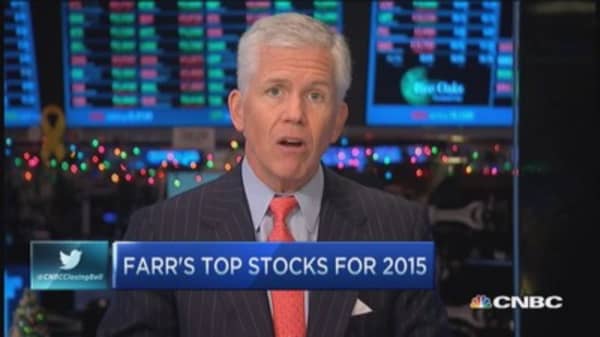Farr, Miller & Washington is a "buy-to-hold" investment manager, which means we make each investment with the intent to hold the position for a period of three to five years. Nevertheless, in each of the past ten Decembers I have selected and invested (personally) in ten of the stocks we follow with the intention of holding for just one year.
These are companies that I find especially attractive in light of their valuations or their potential to benefit from economic developments. I hold these positions for the following year, and then I reinvest in the new list.
Please keep in mind that results have been good in some years and not as good in others. I will sell my 2014 names on Wednesday morning, Dec. 31 and buy the following names that afternoon.





